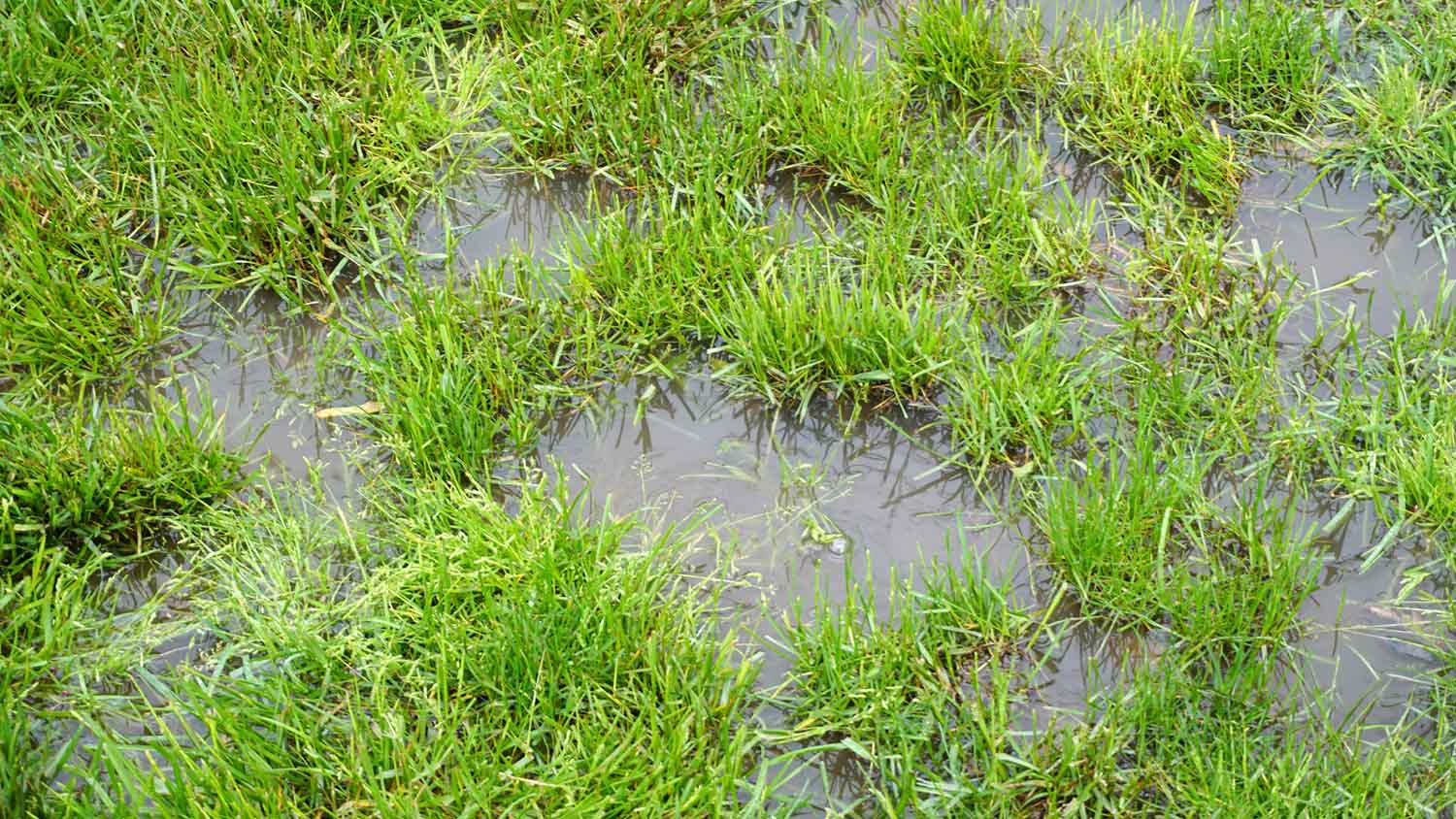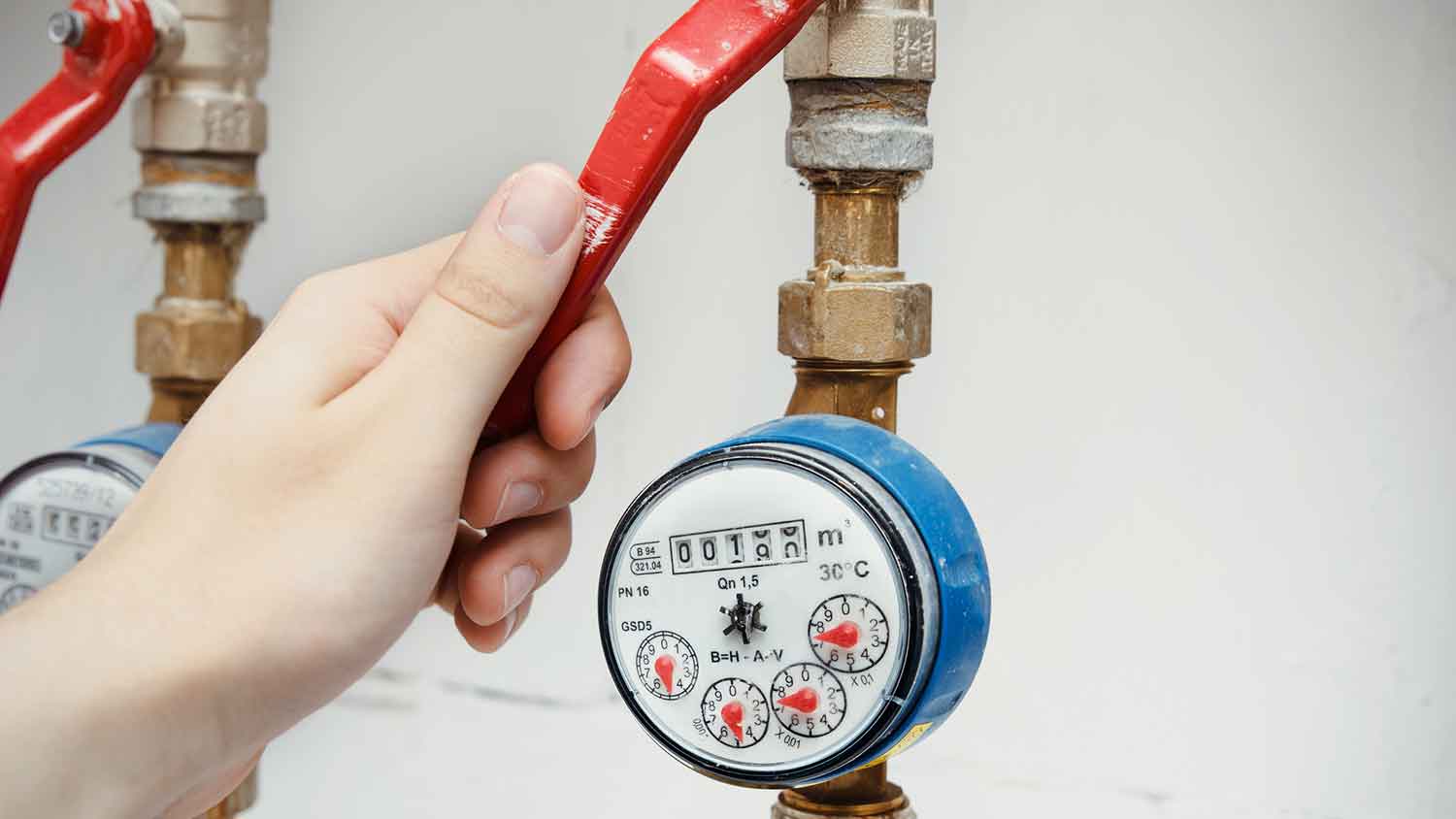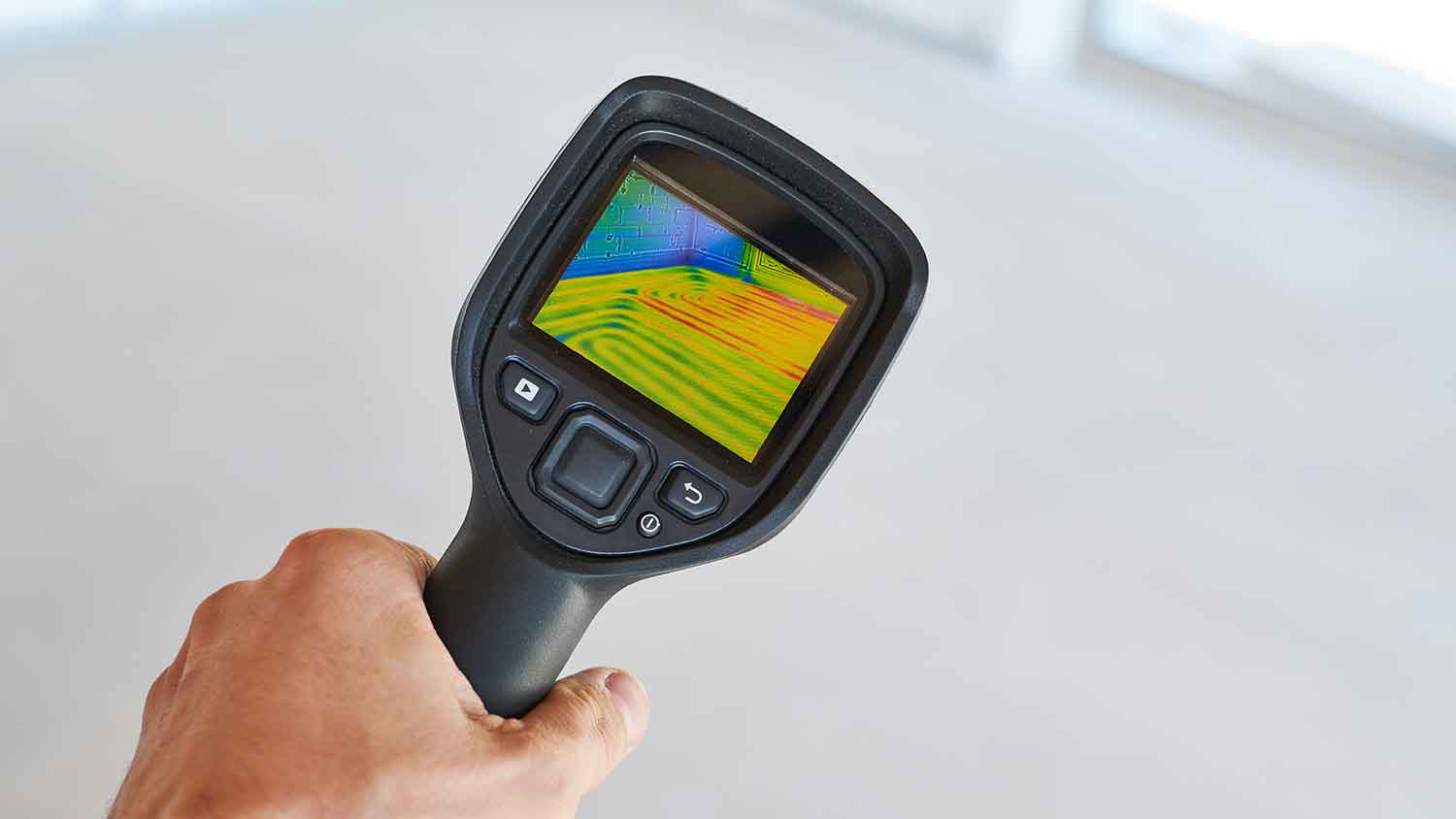
Your dry rot repair cost will depend on factors such as the extent and size of the damage and its location within your home. Here's what you need to know.
Sneaky leaks stand no chance with these DIY detective skills


A swampy-looking yard and high water bills are the last thing you need on your plate right now. But if you have an underground water leak, there are some signs that you need to take action ASAP. This guide can help you learn how to find underground water leaks so that you can tackle the issue immediately and prevent expensive water bills and water damage repair costs.
Underground water leaks on your property can be caused by several different factors. Arming yourself with knowledge can help you discover leaks faster. Here are some of the most common reasons why you have an underground water leak in your home:
Poor soil quality, moisture levels, and changing temperatures can erode your underground pipes.
Low-pH chemicals and additives in your water have dissolved the pipes.
Rusty, old pipes naturally develop cracks over time.
Tree roots can crack pipes as they expand and grow.
Earthquakes or shifting soil can place pressure on your pipes and crack or disconnect them.
The pipes were poorly installed.
The pipe material is low-quality and has a short life span.
The typical cost to repair a leaking pipe ranges from $150 to $850, or $500 on average. However, just how much you'll pay depends on the extent of damage, accessibility, type of pipe, and the cause of the leak.

If you suspect you have an underground water leak, look for signs of a leak to confirm that one is present. Signs of an underground water leak include:
Higher than average water bills
Decreased water pressure from taps and appliances
Cracks in your pavement
Sinkholes
Pooling water on your lawn or on the ground
Cloudy, rusty, dirty, or air-filled water from taps
The smell of stagnant water or mold
Water along the curb
Hissing, dripping, or splashing sounds
An increased number of water-loving pests around your home
A random patch of green grass or plants in your yard
It’s essential to detect water damage promptly. The most common signs indicating a moisture problem are rotting, buckling, or peeling surfaces, which occur in 31% of cases. Damp or wet areas are also common indicators at 26.5%. Less prevalent signs of water damage include stains, discoloration, and odor.
Finding an underground water leak starts with confirming that there's a leak, inspecting your property to see if you can find the leak without specialized equipment, and then resorting to said specialized equipment if you can't pinpoint the leak's location. Here are steps you can take to learn how to find a water leak.

You don’t want to spend hours poking around with leak-finding equipment searching for a leak that doesn’t exist. So, whether you've noticed a higher-than-average water bill or a strange, green patch of grass in your lawn, confirming an underground water leak is the first course of action. Here’s what you’ll need to do.
Turn off the main shut-off valve to your home. This valve could be inside your house (typical in northern homes) or outside of your home (common in southern states).
Check your water meter reading. Your water meter tracks how much water is flowing to your home. Write down the number on the meter.
Wait an hour or more. This gives the leak time to accumulate and can reveal a disparity from the original meter number. Don’t use any water during this time.
Recheck the meter reading. After some time has passed, check your water meter again and compare the numbers. There shouldn't be a change in the two readings.
Once you've established that there is a leak, it's time to inspect your property for signs of an underground leak. Look for cracks in the pavement, pools of water, greener areas of your lawn, water in the street, kissing sounds, sinkholes, and water in the basement.
If you can’t identify an underground water leak on your own, then it’s time to step up your detective skills. There are several tools you or a qualified plumber near you can use to hone in on the exact location of an underground water leak. Let's take a closer look at some of the most common tools for finding a leak.
An acoustic listening device—also called an electronic leak detection system—uses sound waves to identify the location of the leak. Leaks contain unique sound frequencies that an acoustic listening device can detect. You'll need to work with a trained professional to identify the location of the leak and the type of leak based on the wavelengths picked up by the device.
Your technician will place acoustic microphones on the ground or outside of any suspected pipes. Then, the technician will use headphones and equipment to listen for the exact spot where the leak is occurring. The frequencies will appear on the device's screen, and your pro can increase the sound to listen more closely.
If you have cast iron pipes, a leak noise-correlating device may be another type of equipment a technician will use to find an underground water leak. These devices are very similar to acoustic listening devices—only correlation logger sensors go on both ends of a pipe to narrow in on the location of the leak. It helps if you’ve already singled out the leaky pipe but don’t know where in the pipeline the leak is coming from.
Just like with an acoustic listening device, your pro will listen for the sounds of a leak and use the wavelengths for precision. One end of the correlation logger goes into a sewer or pipe, while the other logger goes into the other side of the pipe. The device will record the measurements, and your technician will then read the recording and trace the measurements to the correct location.

If hot water is leaking underground, then you might be able to use thermal imaging to identify it. This method doesn’t always work, however. If the pipe is buried deep underground, it’s hot outside, or there are lots of UV rays, the thermal imaging device may have a harder time picking up on the presence of heat underground.
Still, thermal imaging devices are very user-friendly and don’t require advanced skills to use, making them a good option for the avid homeowner on the hunt for a leak. On the other hand, deciphering infrared images often requires the assistance of a trained professional, but you can ask a local plumber to analyze your recorded thermal videos from afar to speed up the detection and repair process.
With this in mind, here’s how you can use thermal imaging to find a leak in your pipes.
Turn on your thermal camera.
Point the camera at a known location for pipes inside or outside your home.
Scan the ground for infrared images.
When you find signs of thermal energy, follow the images to look for signs of heat escaping from the pipes.
With trace gas leak detection systems, a professional uses gas to find the leak. Helium is one of the most common tracer gases because it’s safe, lightweight, and permeable, making it easy to detect. Here’s how trace gas leak detection systems work:
A technician injects gas into the suspected pipe.
Once the gas enters the pipes, your pro will use a sniffer probe to track where it exits through water leaks.
A mass spectrometer gas analyzer traces the gas to identify the leak.
Underground water leaks can occur for many reasons, making it difficult to prevent them—especially when your home has older underground pipes. Still, there are ways you can help prevent and respond to leaks as soon as they arise.
Maintaining your appliances and pipes is the best way to reduce underground water leaks. Check your appliances and the interior and exterior of your home every month for signs of a leak to help prevent mold after water damage.
On top of a consistent maintenance plan, familiarize yourself with common homeowners insurance plan tips so that you know who to contact the moment you detect an underground water leak. Also, know where your main shut-off valve is for when you need to promptly shut off the water supply to your home.
Even though you can use your detective skills to find an underground water leak, in most cases, you'll need a local water damage restoration company to handle these types of leaks. Some homeowners insurance policies cover water damage, too, making it important that you look up your policy before attempting to DIY a repair.
A skilled technician knows how to use devices to find the exact location of the underground leak and can quickly take action to repair it and prevent high water bills.
Not to mention, some underground water leaks require extensive work, like excavation, leveling, and pipe replacements. So, finding a leak may save your pro some time, but you'll likely need a plumber anyway to fix the issue.
Leaking water has the potential to cause extensive damage to your home. Once you’ve spotted the signs of water damage, it’s important to get a water damage restoration company out to your house as soon as possible. Fixing water damage requires the skilled touch of a professional, so take the extra effort to find the right one.
Instead of choosing the first company you find, reach out to several specialists to see which one best suits your needs. A quick phone call can help you evaluate their experience, expertise, and estimated costs. Before making a decision, arrange for an onsite consultation so they can accurately assess the problem and give you a more precise quote. You can also use this as an opportunity to ask any extra questions that weren’t asked or answered over the phone.
To find a qualified and affordable water damage restoration company, use this list of questions to help narrow down your options:
Are you licensed?
How many years of experience do you have?
What restoration experience do you have?
Do you have insurance coverage, and does it cover accident damages?
Do you offer warranties or guarantees?
Can you provide customer testimonials on your recent work?
Are you available immediately?
How long will the restoration take?
Can we stay in our home during the restoration?
How much will the job cost?
From average costs to expert advice, get all the answers you need to get your job done.

Your dry rot repair cost will depend on factors such as the extent and size of the damage and its location within your home. Here's what you need to know.

Fire hydrant costs might not be an expense you think about day-to-day, but they’re important to consider for the safety of your home.

Fixing a slab leak requires finding the leak, digging a trench, breaking the slab, pipe lining, and more. Keep reading to learn how to fix a slab leak.

Water and moisture can seriously damage your walls and ceilings. Use this guide to learn how to fix water damage, spot signs, and prevent future problems.

Smoke odors can be persistent and take months to get rid of, especially in hard, porous materials. Learn how to remove smoke smell from wood furniture.

Standing water can damage your foundation in numerous ways. Learn about the causes, risks, and solutions for foundation damage from standing water.